During the summer of 2023, I worked as an intern on the MLS project “Art and Resistance Theme Semester: Highlighting Documentaries for Course Support”, under the mentorship of two amazing librarians, Karen Reiman-Sendi and Josh Harris. I created an annotated bibliography Art(ists) in Action: Selected Documentaries for the Arts & Resistance Theme Semester (2023). It includes 31 documentaries about artists around the world who use their creativity to work toward social justice and equality. Fall 23 has been identified as an Arts & Resistance theme semester, which explores the power of art to shape cultural and political narratives and challenge dominant regimes. The annotated bibliography will be distributed to instructors during the Fall 23 theme semester.
A main part of my project is identifying, viewing, and evaluating documentaries, a film medium that is defined by John Grierson as “the creative treatment of actuality” [1]. To catch the spirit of my project, this blog post will be a combination of photo documentation and writing.
***
Does art have the power to shape society?
Yes.
This was my answer when I saw the MLS internship posting. I immediately felt a strong connection with the project. As an Art and Design major, I’m eager to know how artists use their art to change people’s minds and shape society in a positive way.
The only thing I was not sure about is whether I could make it, as a freshman who has never done any research, or as an international student who knows little about the culture and history of the U.S. and other countries. After getting the internship and canceling my flight back home and moving into a new apartment, I finally began the first internship in my life, thrilled and nervous at the same time.
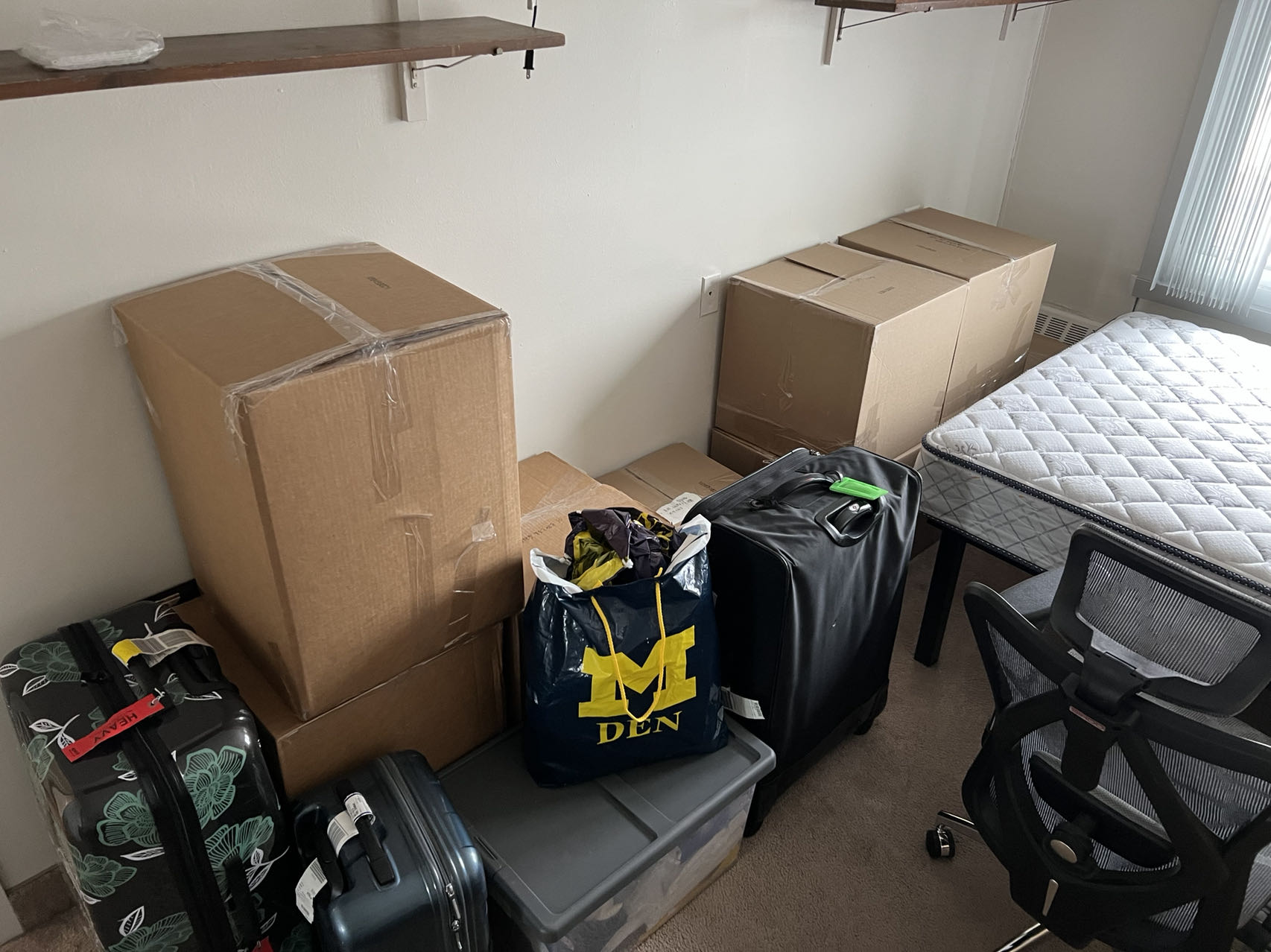
New apartment move-in
Communication and collaboration are big challenges for me. Initially I was quite daunted by the idea of having frequent meetings with my mentors. During the first meeting I could barely give clear and prompt reactions to my mentors. The fact that I need to take extra time comprehending English and formulating oral responses frustrates me. My notebook turned out to be my good friend. I can use it to take notes, organize my thoughts, and track my feelings by drawing emojis and writing diaries.
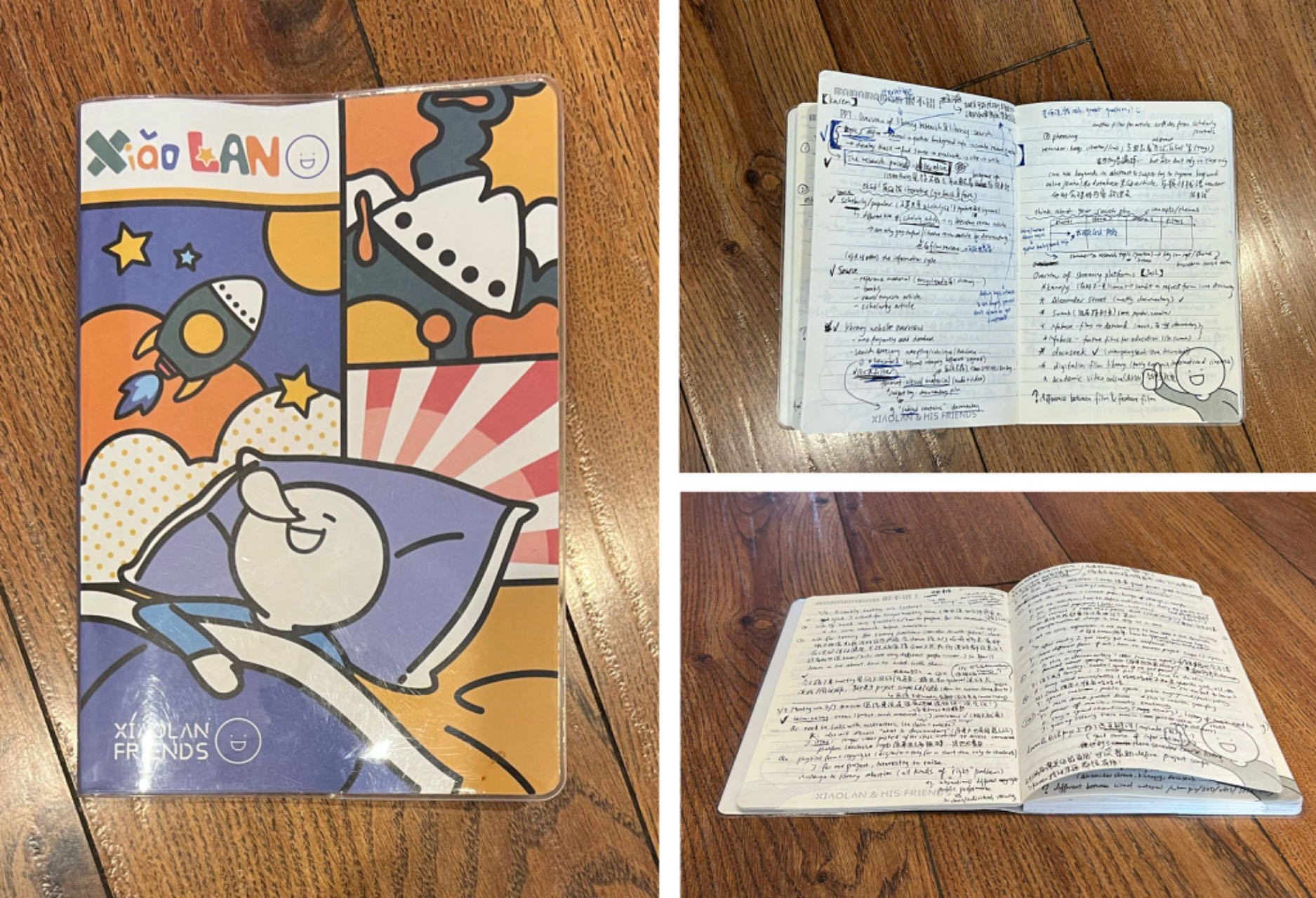
Notebook cover and inner pages
Also, I received immense support and respect from my mentors. They always asked me about my thoughts and questions and gave thoughtful responses. I slowly found out that none of us knew everything and we were all in the process of learning new things. That’s when I realized that it was not a big deal to say something wrong or not having my thoughts organized as I speak – nothing has to be perfect. So, I’m very glad that over the three months, l gained more confidence to communicate my thoughts and more courage to make mistakes, knowing that it’s fine as long as we keep the conversation going.

Work scene
In terms of the research process, the part of defining the project scope was the biggest challenge and growth for me. I realized that doing research is different from studying in that there’s not a right or wrong answer for me and nobody could tell me what exact steps to take; I needed to come up with my own answer. So I ended up using multiple methods to make sense of the project scope. I talked with Karen and Josh, watched videos and read articles and books, interviewed art and film studies librarians, browsed over the library catalog and video streaming platforms, and read through all the theme semester course descriptions to catch keywords. I summarized these keywords in six dimensions: art form, identity, cause, time period, act of resistance, region. This was the most pivotal point in the research. These keywords helped me to identify the recurring topics and themes that instructors need and became my reference when searching for documentaries in the library catalog. Also, the six dimensions guided my future evaluation of the documentaries and framed the keyword section in each bibliography entry.
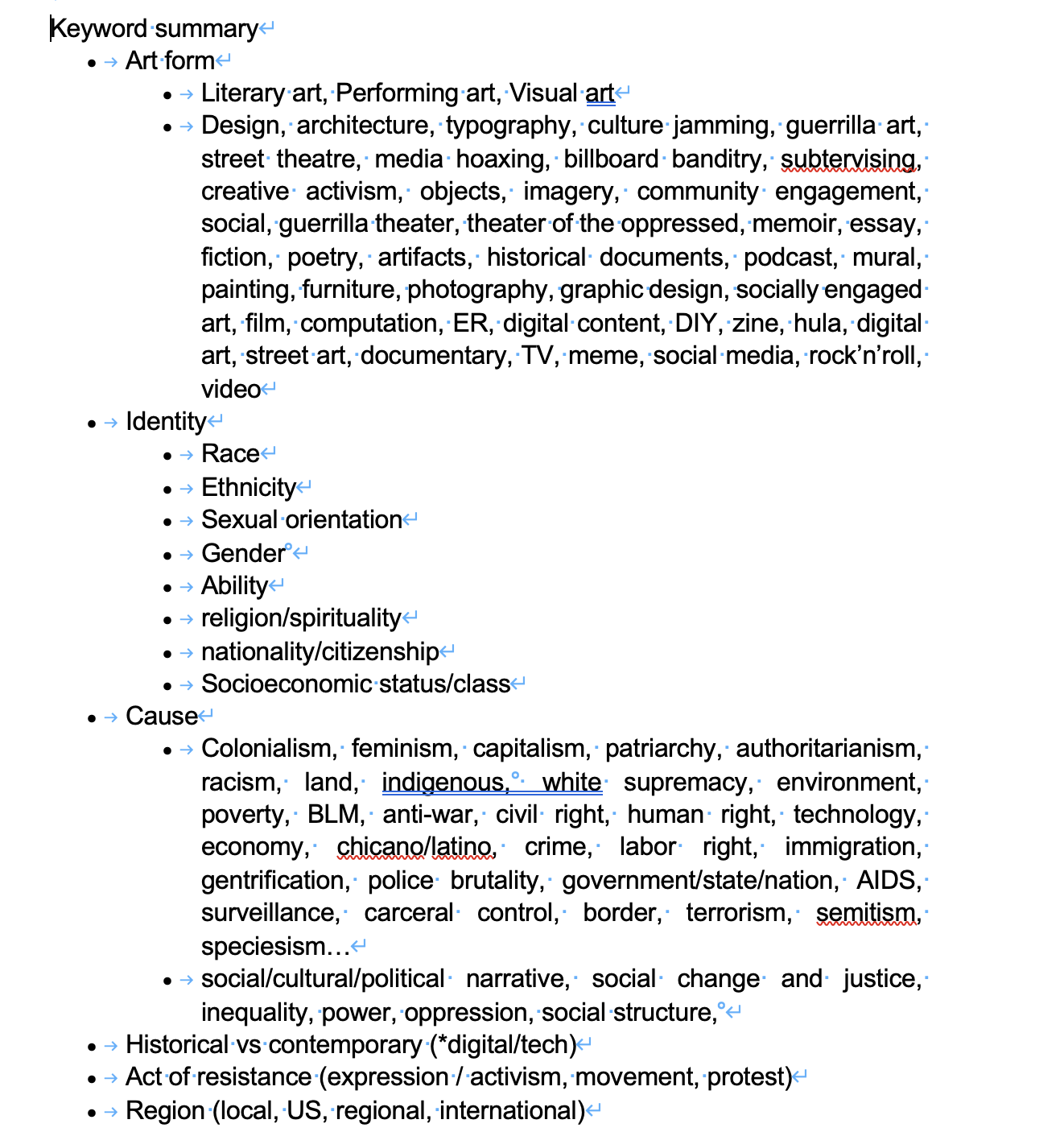
Keyword summary
Looking back, this research journey was filled with confusion and frustration, but there was much more joy and surprise. I still remember a particular night, sitting on a bumpy train on my trip to California. I grudgingly waited for Google to tell me the difference between human rights and civil rights, praying to not lose signals or internet connection for another hour as the train entered tunnels and passed desolate lands.

On a midnight train
Research is indeed a super messy, iterative process, one that I always visualize as an upward spiral: constantly going around in circles but in an upward direction. At first I feel very disoriented and I don’t know what methods to use and in what order, but it turns out all the reading, talking, thinking, and searching would ultimately help me to pull all the pieces together – nothing is wasted. Reflecting from a retrospective perspective, I think I always have the impulse to think and plan very carefully about each step of the work. But after this research I know that the most important thing is not to know clearly what to do but to keep working and moving forward.

Research process
Watching documentaries was the best part of my project. It’s amazing how, as my body sits still on a sofa in a small apartment in Ann Arbor, my mind can be floating to any part of the world and my eyes can witness all kinds of events and people. Using DVDs was very new and fun for a Gen Z. I like to pile the discs up high on my table. On the other hand, streaming videos makes my life much easier.
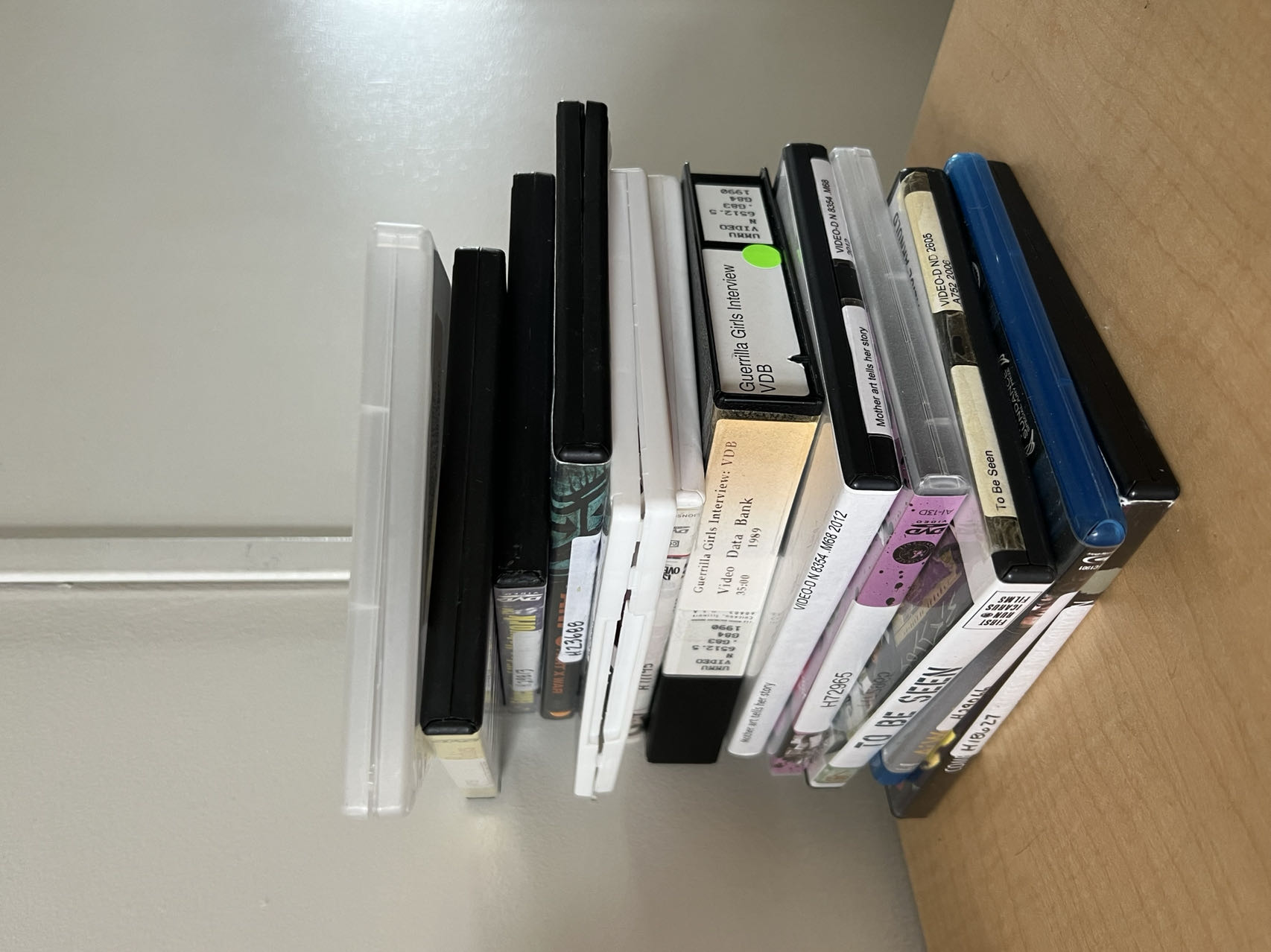
A corner of my table
I treated every documentary with care, taking notes and making comments on its topic, cinematography, and relationship to the theme of Arts & Resistance. Better even if there lies a bowl of banana smoothie as I pause and resume the videos.
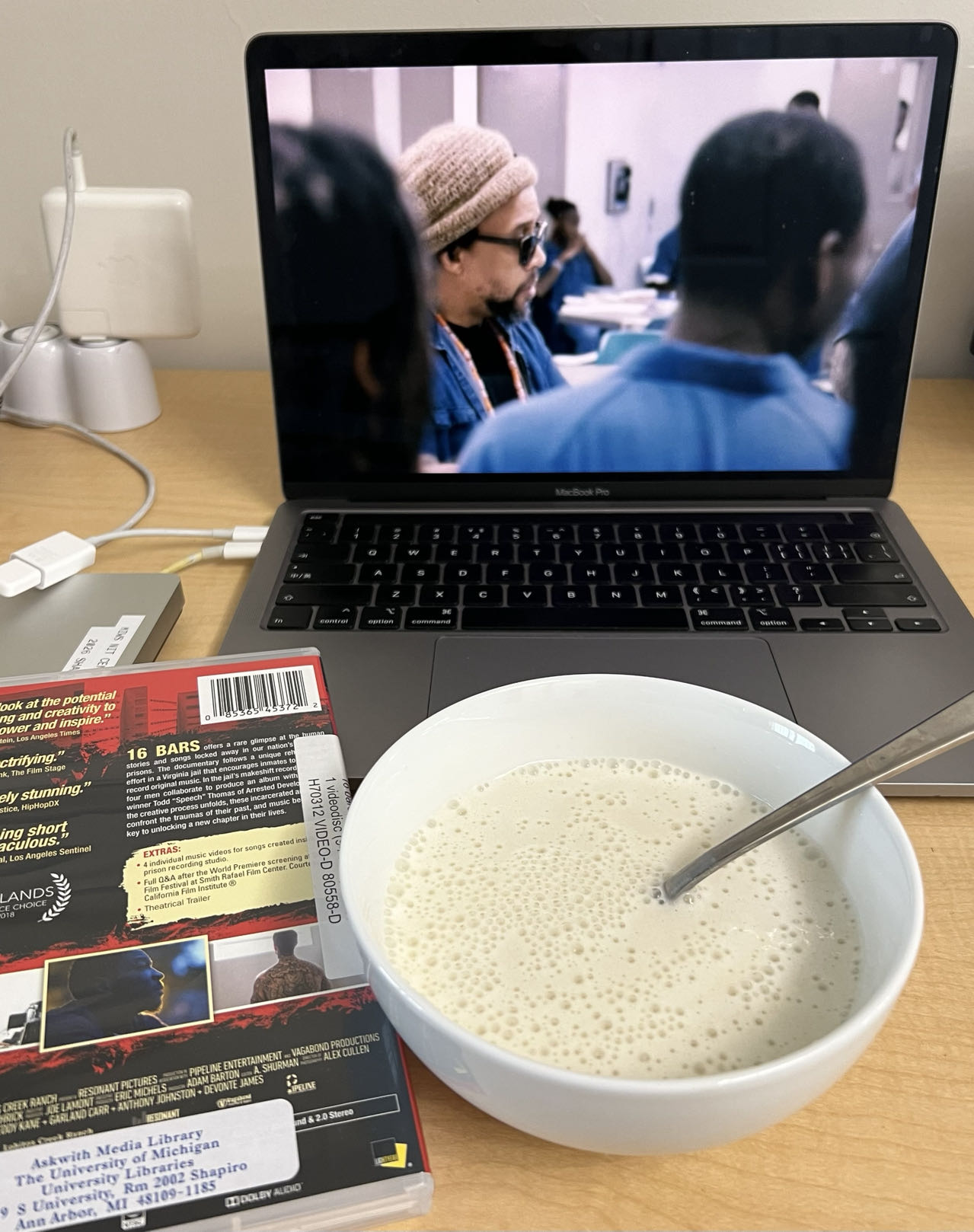
Work scene
Each documentary gets its own piece of hand-written paper record. By the very end there were 58 pieces of paper. I put them into a pink folder.
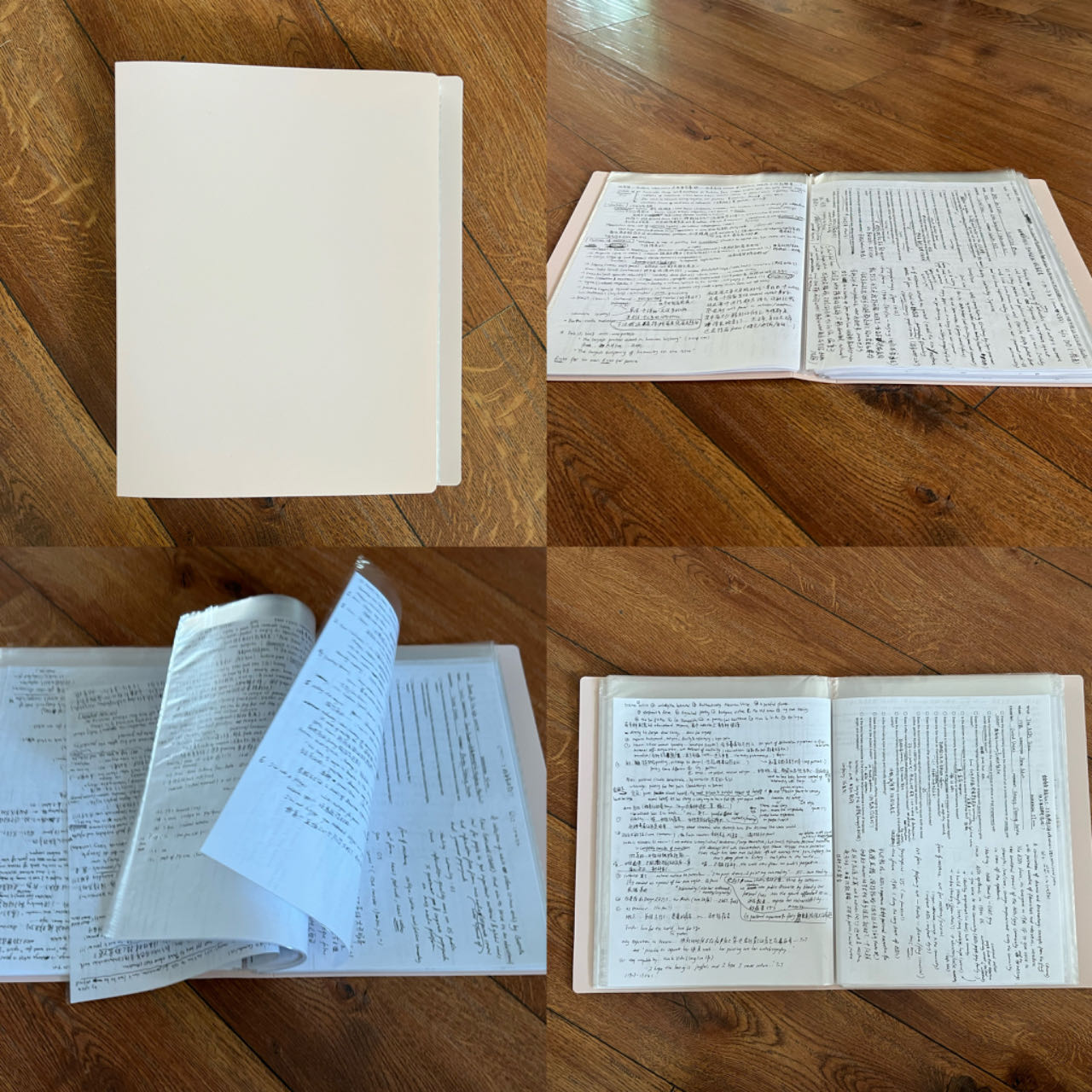
Cover and inner pages of my folder
In the last step of my process, I want to write more about what’s inside the folder. There are documentaries that completely toppled my narrow perspective of the world that I was born into and grew up with. Before watching these documentaries, I didn’t know that African Americans could be beaten and tortured so brutally in the 1950s America, I didn’t know that the world’s largest garbage dump is in Brazil, I didn’t know there is a country in Africa called Senegal, I couldn’t believe there could be so much discrimination placed on people of color, on women, on the LGBTQ and disability community, on criminals, on immigrants, on the poor, and how much hardship in their life they have to manage. Most importantly, I didn’t know how artists can be involved in all these issues and use their creativity to change what the world looks like. In these documentaries, I saw Egyptian women artists spraying graffiti on their streets under darkness to overthrow the government’s regime. I saw an artist who bravely posted political comics while he and his family were facing ongoing personal safety threats. I saw crowds in different parts of the world singing “Give Peace a Chance” and waving the victory gesture to end the Vietnam war. I was so deeply touched by these scenes.

Work scene
I’m sure it was the power of art that moved me so. It was the power of art that stirred up my emotions and connected me with other human beings in the world that I might never be able to meet or talk with. Through art I feel their struggles and joy as mine and I see my experiences happening in their lives, and thus know that I should also take actions. Reflecting on how different the world looks to me now, I’m sure art is indeed the vehicle to expand people’s imagination and lend us new perspectives to see the world, and there’s no doubt it will lead to actions and changes, whether small or big.
Going back to the question: does art have the power to shape society?
The answer is still a solid yes, yes, and I want and will be a part of this force.
[1] Grierson, J. “The Documentary Producer.” Cinema Quarterly, vol. 2, no. 1, 1933, pp. 8.